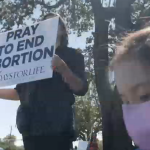Of all the developing nations, India should have been able to summon a defence against COVID’s second wave.
Overcrowding, poverty and patchy public health systems across a vast and disparate country were all factors in the virus’ favour, but India is also home to the world’s biggest vaccine manufacturing capacity.
The Serum Institute of India (SII) is at the centre of plans for Covax – a global coronavirus vaccine-sharing project seen as the key to ensuring billions of people beyond the economically secure West receive protection.
SII has committed to delivering more than a billion doses of the AstraZeneca and Novavax vaccines, while three other jabs, the Johnson & Johnson, Bharat Biomedica’s Covaxin and the Russian Sputnik V are all in production in India.
It had committed to deliver 200 million doses through the Covax programme by June – but that is now in serious doubt, with only 40% of the order schedule fulfilled to date.
Despite its domestic capacity, fewer than 10% of the 1.4 billion population has been vaccinated, and questions are being asked about why for every two doses India has administered at home, one has been exported abroad.
Indian government figures show that more than 145 million doses have been delivered in total, and while daily vaccination rates have risen to more than 3.3 million doses – 10 times the UK average – it’s not enough to keep up with demand.
Just as striking is the number of doses that have been exported: a product of the country’s manufacturing power that is now being cited as a domestic political failure as the country battles a brutal second wave.
More than 66 million doses of the five vaccines have been sent to 93 different countries and UN agencies.
The largest single recipient is India’s neighbour Bangladesh, with 10.7 million doses, followed by Morocco at seven million.
But strikingly, the UK is the third largest beneficiary, with five million doses of an original order of 10 million AstraZeneca shots having been delivered.
Britain is almost alone among developed nations in having bought vaccines from India. Canada is the only other G7 state to have done so, and the only other European recipient of exports is Albania.
Despite having domestic production capacity for the AstraZeneca vaccine, the SII doses became pivotal to the rollout here in March.
It fuelled a surge that set new daily records in the middle of the month, but when India banned the export of the second five million, the NHS was so concerned it ordered first doses for under 50s be paused.
India has suffered the same pressures as manufacturers around the world, with huge demand for raw ingredients, equipment and bottling affecting production.
The US has offered to provide excess AstraZeneca doses and raw materials.
Please use Chrome browser for a more accessible video player
Distribution has also been a challenge. India’s threadbare public health system is funded by just 1% of GDP – the NHS operates on around 8% – and while it has huge experience of vaccination it has been overwhelmed by the second wave.
The private healthcare system, on which most Indians rely but cannot afford, is also swamped and will need to be incorporated into the vaccine effort if it is to reach its initial target of the 400 million most vulnerable Indians.
Please use Chrome browser for a more accessible video player
A domestic catastrophe for India could become a global vaccine crisis, too.
The majority of the 93 nations that have received vaccine supplies from India are in Africa and Asia – many poorer and smaller states with no production capacity of their own and populations in dire need of protection.






















